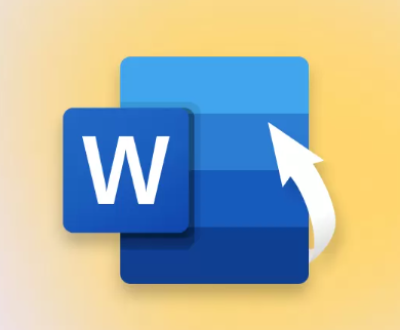Formatting an SD card is a relatively straightforward process, but the time it takes can vary based on several factors. To give you a comprehensive understanding, I’ll break down the process, factors affecting formatting time, and the different methods for formatting an SD card.
Formatting an SD card involves erasing all the data on it and setting up a new file system. This process prepares the card for new data, allowing devices to read and write files correctly. There are two primary types of formatting:
Quick Format: This option removes the file system’s structure, making the data inaccessible. However, the actual data remains on the card until overwritten. This method is faster and usually takes just a few seconds to a couple of minutes, depending on the card’s size.

Full Format: This option goes a step further by checking the card for errors and overwriting all data. It’s more thorough and, consequently, takes longer ranging from several minutes to over an hour for larger capacities.
Factors Affecting Formatting Time
Several factors can influence how long it takes to format an SD card:
Card Capacity: SD cards come in various sizes, typically ranging from a few megabytes to several terabytes. Larger cards will generally take longer to format, especially with a full format.
Formatting Method: As previously mentioned, a quick format will be significantly faster than a full format. Users should choose the appropriate method based on their needs.
Device Performance: The device used to format the SD card plays a role. A high-performance computer or camera may format the card faster than an older or lower-spec device.
File System Type: Formatting to different file systems (e.g., FAT32. exFAT, NTFS) can also affect the duration. Some systems require more time to set up than others.
Card Condition: If the SD card is damaged or has corrupted sectors, the formatting process can take longer, especially during a full format, as the device checks for and attempts to mark bad sectors.
Step-by-Step Formatting Process
To provide a clearer picture, here’s a typical step-by-step process for formatting an SD card on different platforms:
Formatting on Windows
Insert the SD Card: Use an SD card reader or insert it into your device if it has an SD card slot.
Open File Explorer: Navigate to “This PC” or “My Computer” to locate your SD card.
Right-click on the Card: Select the SD card and right-click on it.
Select Format: Click on the “Format” option from the context menu.
Choose Format Options: You can choose between Quick Format and Full Format. Select the file system (FAT32. exFAT, NTFS) depending on your needs.
Start Formatting: Click “Start” to begin the formatting process. A progress bar will indicate how long it takes.
Completion: Once finished, a message will confirm that the format is complete. For a quick format, this may only take a few seconds; a full format could take several minutes.
Formatting on macOS
Insert the SD Card: Use an SD card reader or insert it into your Mac.
Open Disk Utility: Navigate to Applications > Utilities > Disk Utility.
Select the SD Card: Locate the SD card in the list of drives.
Click on Erase: Choose the “Erase” option at the top of the window.
Choose Format Options: Select the file system and provide a name for the card.
Start Erasing: Click “Erase” to begin the formatting process. Similar to Windows, the time taken will depend on the chosen format type.
Completion: A notification will inform you when the process is complete.
Formatting on Cameras or Other Devices
Access the Menu: Use the camera or device menu to navigate to settings.
Find Format Option: Look for the format option, usually under storage or settings.
Confirm Formatting: Follow prompts to confirm formatting, which typically takes a few seconds to a few minutes, depending on the card size and device processing speed.
Best Practices for Formatting an SD Card
To ensure a smooth formatting experience and maintain your SD card’s health, consider the following best practices:
Backup Data: Before formatting, always back up any important data, as formatting will erase everything on the card.
Use the Right Format: Choose the appropriate file system based on your device compatibility. FAT32 is widely used for compatibility, while exFAT is suitable for larger files.
Check for Errors: If you experience issues with your SD card, run a check for errors before formatting. This can prevent future problems.
Safely Eject the Card: Always use the proper method to eject the card from your device to avoid corruption.
The time required to format can range from mere seconds for a quick format to over an hour for a full format, depending on various factors such as card capacity, device performance, and chosen formatting method. By understanding these elements, users can make informed decisions about when and how to format their SD cards, ensuring their devices function smoothly and effectively. Always remember to back up any crucial data before embarking on the formatting journey to avoid data loss.
About us and this blog
Panda Assistant is built on the latest data recovery algorithms, ensuring that no file is too damaged, too lost, or too corrupted to be recovered.
Request a free quote
We believe that data recovery shouldn’t be a daunting task. That’s why we’ve designed Panda Assistant to be as easy to use as it is powerful. With a few clicks, you can initiate a scan, preview recoverable files, and restore your data all within a matter of minutes.
Subscribe to our newsletter!
More from our blog
See all postsRecent Posts
- How to recover accidentally deleted files 2025-07-01
- How do i recover a file i accidentally deleted 2025-07-01
- How to recover an accidentally deleted file 2025-07-01

 Try lt Free
Try lt Free Recovery success rate of up to
Recovery success rate of up to









